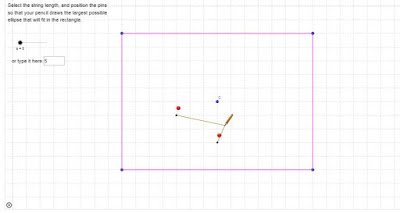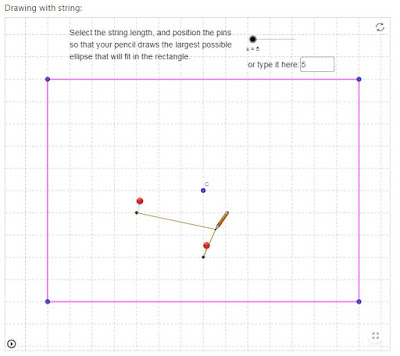I suspect that, in the coming school year, as a result of the pandemic, many teachers will actually be doing a blend of RT and SPBL - in other words, a blend of two blends. Whereas we meet with our RT students every single day, and our SPBL students only once a week, they'll probably be somewhere in between. I don't know how to do that, but I figured I could at least follow up the SPBL post with this one about how we've been organizing our Real-Time courses.
Real-Time Daily Routine:
We each have a regular schedule of our classes, just as anyone in a brick and mortar school would. I see the same kids everyday in my 9:00 class, my 10:00 class, etc. We hold our classes in Zoom. We ask our students to join the Zoom room via our LMS (Sakai), because we use it not only for content storage, but also as a bulletin board, with announcements and reminders that we want them to see on their way into class. So on December 2 (in the before time) this is what they saw on their way into class:
Note: I'm jumping into a part of the year where the kids are all pretty familiar and comfortable with the routine - but typically we spend the first month or two getting them there, by introducing the tools slowly, and giving them lots of opportunities to tell us how things are going etc.
On Dec 3 there was a reminder of what's due right now, today's secret word, and a shot of a tweet from one of the students (we use Twitter a lot with our students). Off they then go to class by clicking on the Zoom tab at the left. Our classes are 50 minutes long, and I happen to see all my students everyday, although that's not the case for all of our courses, of course that depends on the number of credits the course has. What happens in class is covered below in "Resources organization".
Other routines:
Students can access other important links via the tabs on the left in Sakai, such as Voicethread, Gradebook, etc. It's a one-stop shop.
We make a weekly work guide and share it with the admins of each school, as well as of course with the students. More about that later.
Most student work, digital or paper, is handed in via dropbox or email. It's then returned via individual student google drive folders. The exception would be if the work was done in a Desmos or Classkick activity, in which case the work and the feedback live there.
For tests, we use paper and pencil. We send the test to their brick and mortar school, where it's printed, and they then write it supervised by someone at that end, who then faxes the papers to us.
We take attendance, contact parents, tutor, and fill out report cards like usual. Our students write the same final formal June exams like everybody else in Quebec, excluding this year of course.
The rest of the routine is more easily explained by looking at the resources, and how they're organized on Sakai.
Since we don't all organize our resources exactly the same way, I'll just show how I do it - basically I organize things by week, but I'll show you a whole unit as an example.
A Unit:
Here's how the Optimization unit looked for one of my courses, called Math SN5. At the beginning of each week, I upload all the necessary resources within a folder. I add it to the top of the pile, which is why it's in descending order:
 |
| Week number and topic |
A Week:
Inside each folder is everything that's needed for that week, including the weekly work guide, all the Voicethreads (and their offline counterparts for those with no internet at home), accompanying notes to complete, links to activities, assignments etc. There are some additional items that would only appear as the week progresses, for example, the recorded live lessons (archies) for anyone who was absent, solutions to various assignments etc. Here's what week 14 looked like:
 |
| The view inside one week's folder |
Of all these documents, probably the work guide is the most important. I keep circling back to it as the week goes on, because sometimes, pretty much always, things change. In case the screenshots are too hard to read, here are the links to the googledocs for Week 13, Week 14, Week 15:
As you can see, the work guide includes important announcements, (like upcoming tests or assignments), what's happening during and between classes (like voicethreads), and what needs to be handed in by the end of the week. Obviously, the synchronous part happens during class, and the asynchronous part between.
A Class:
What's the routine in class? I need to show my "lesson slides" to explain. Each day, I create what I call lesson slides, using powerpoint. These slides have everything I need in order to do what's on that day's list. I then share my screen and just click through the slides, pausing as needed if they're going to be writing something over a slide. It saves time, makes things flow during class, but it also helps me make sure I don't forget to do anything I wanted to do. That happens...a lot.
Here is a collection of different types of slides that I might have (not all from the same day, but all from this unit). I've put callouts in yellow so you get some background for each type of slide (here's the link in case it's hard to read):
So the types of slides that happen everyday are: Title, Today, & Tonight. Everything else depends on the list for that day.
But amongst these slides, perhaps the most important is the title slide. I use it to display the date and a picture that either they've sent me, or, if I've run out of those, one of mine. It might be about my garden, or about the topic we're doing, the season, or something that's happening in the world. We spend the first few minutes talking about that picture, whatever it is. Protip: They love sharing about their pets, as well as food they've made, which I discovered after the shutdown and we were all baking like crazy. This helps a lot to overcome the fact that we're all so far apart, and likely would never meet face to face. It humanizes the whole experience! It's also made it possible for me to create a movie at the end of each year, that's just a run-through of the title slides, but which tells the story of our year together. This year's nearly broke my heart:


























